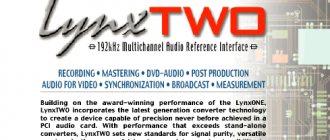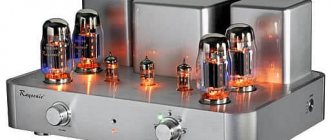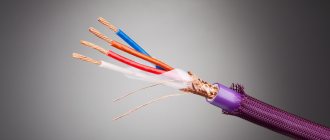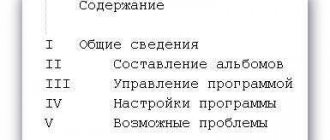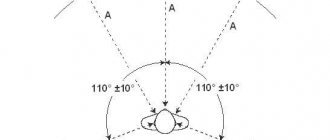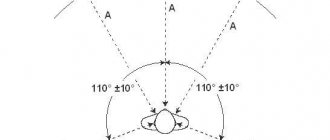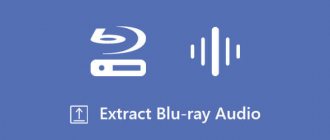Andrey Yuryevich Teplyakov 08/14/2018
18213
Hi-Res Audio (abbr. HRA) – music files that provide the highest quality digital sound . Comparing the format related to HI-Res audio with mp3, you can notice a striking difference in sound quality. Hi-Res Audio is head and shoulders above the sound quality of compact discs (CD, DVD) and even many high-quality compressed digital formats. Hi-Res Audio is considered to be the standard of quality in digital audio.
Rough comparison of formats:
Let's discuss the processes that occur when playing high-resolution media and formats - HI-Res : SACD (SuperAudioCD), DVD-Audio, DSD and DXD formats.
⭐ The best wireless headphones 2022:
In the previous article on HI-FI, we already looked at the myths associated with the sound quality of tape recorders, vinyl, tube amplifiers and the CD format. It's time to pay attention to the uncompromising sound formats of modern HI-FI. I’ll immediately reassure readers that there will be less criticism than in the last article and it relates not to sound quality, but more to technical issues.
I warn you that the article was written for the most curious readers; for the unprepared (but curious) reader, I recommend turning to Wikipedia as necessary. For less curious readers, I recommend reading only the “myths” and conclusions.
See also:
- Dynamic range of all digital formats, including DSD – myths and reality
- Hi-Fi sound, myths and reality - the evolution and development of sound
- Quality difference between mp3 and FLAC – 192Kbps or 320Kbps?
First High Definition Format (HI-Res) - SACD Media
Let's start with the very first of the high-resolution formats (HI-Res) - SACD media . The media itself is of no interest to us; it is similar to DVD in capacity and physical structure; the DSD audio information storage format is of interest.
Information in this format differs in encoding method from all other formats and uses “pulse density modulation” (PDM - Pulse Density Modulation) in contrast to the “pulse code modulation” PCM (Pulse Coding Modulation) usually used in audio encoding.
1.1 What do all these transformations mean?
To represent digital audio, pulse code modulation is most often used, in which the original analog signal is converted by an ADC (Analog to Digital Converter) or ADC (Analog to Digital Converter) into a serial stream of digital numbers. It does this strictly in accordance with the given quantization frequency (for CD the quantization frequency is 44100 Hz) - it is with this frequency that the ADC measures the amplitude (intensity) of the sound wave and encodes the measurement result as a number.
This happens in accordance with the ADC bit depth (the second important indicator of ADC quality), in the range from 0 to 65535 for a 16-bit ADC, in the range from 0 to 16.7 million for a 24-bit and from 0 to 4 billion for a 32-bit ADC.
It is obvious here that even a small increase in the bit depth of the ADC leads to a sharp (exponential) increase in the quality and accuracy of audio encoding.
The reverse conversion process occurs using a DAC (Digital to Analog Converter) or DAC (Digital to Analog Converter) - a sequential stream of numbers with a given quantization frequency is converted into a sound pressure value.
Naturally, the higher the bit depth of digital audio, in the presence of appropriate conversion, the more accurate the restoration of the analog signal and the higher the sound quality. ⭐ Best wireless TWS headphones 2022:
Summing up
Compared to heavyweights like SACD and Blu-ray Audio, which are technically demanding and very inexpensive, HRA audio looks like an ideal alternative. Premium car systems have already been launched on the market, allowing you to listen to HRA on the road. You can run Hi-Res audio up to 24/96 on a pair of high-quality headphones with a mid-range phone or player by simply downloading and often listening to the album from an online service. And physical formats will remain in the niche of collectors and as the main choice for fans of multi-channel audio.
What is the difference between PCM Density Code Modulation (PDM) and PCM Pulse Code Modulation (PCM)?
We looked at PCM Pulse Code Modulation (PCM) . This is how audio is converted to CD, DVD-audio, DXD. What is the difference between PCM Density Code Modulation (PDM)? from Pulse Code Modulation PCM (PCM)?.
There are differences in the method of converting an analog signal and back from digital to analog, and in the digital method of storing information.
Storing information for sound is not important. Let us only note that to store audio in SACD (DSD), a stream of bits is used, not multi-digit digits, in the range from 0 to 1, i.e. a binary signal. What matters is how analog is converted to digital and vice versa.
It is from this moment that confusion and myths begin
